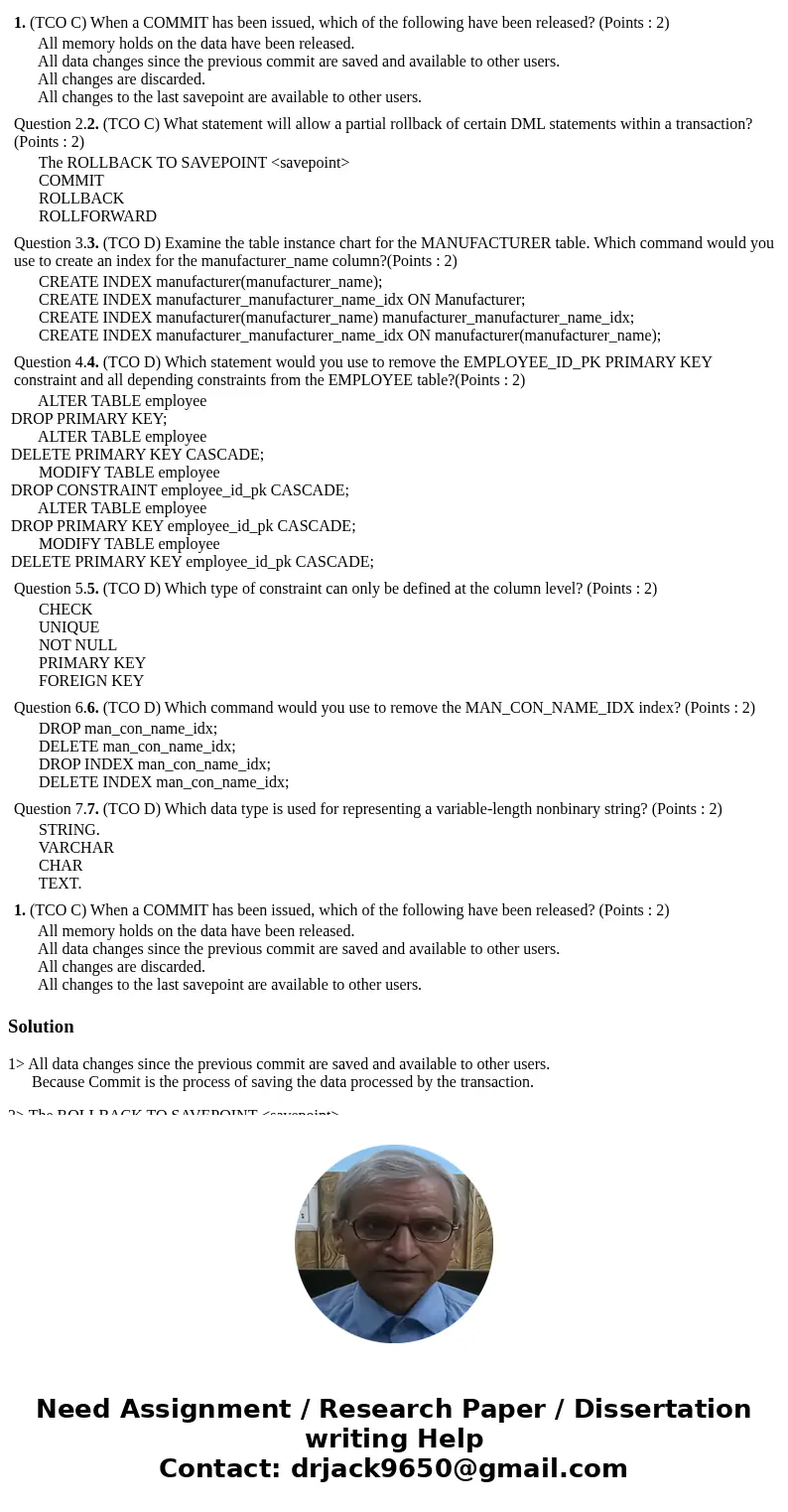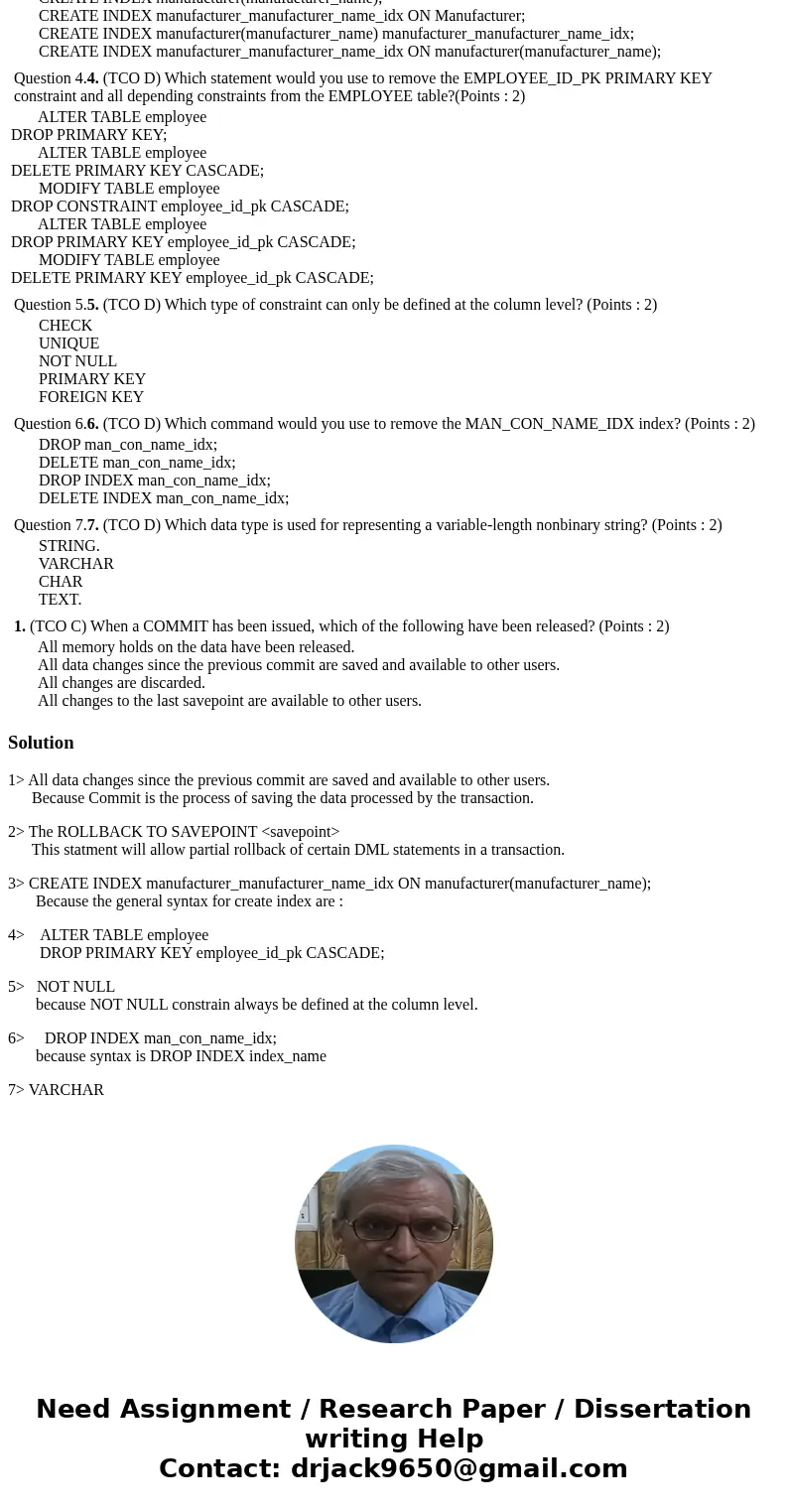1 TCO C When a COMMIT has been issued which of the following
All data changes since the previous commit are saved and available to other users. All changes are discarded. All changes to the last savepoint are available to other users. |
COMMIT ROLLBACK ROLLFORWARD |
CREATE INDEX manufacturer_manufacturer_name_idx ON Manufacturer; CREATE INDEX manufacturer(manufacturer_name) manufacturer_manufacturer_name_idx; CREATE INDEX manufacturer_manufacturer_name_idx ON manufacturer(manufacturer_name); |
DROP PRIMARY KEY; ALTER TABLE employee DELETE PRIMARY KEY CASCADE; MODIFY TABLE employee DROP CONSTRAINT employee_id_pk CASCADE; ALTER TABLE employee DROP PRIMARY KEY employee_id_pk CASCADE; MODIFY TABLE employee DELETE PRIMARY KEY employee_id_pk CASCADE; |
UNIQUE NOT NULL PRIMARY KEY FOREIGN KEY |
DELETE man_con_name_idx; DROP INDEX man_con_name_idx; DELETE INDEX man_con_name_idx; |
VARCHAR CHAR TEXT. |
All data changes since the previous commit are saved and available to other users. All changes are discarded. All changes to the last savepoint are available to other users. |
Solution
1> All data changes since the previous commit are saved and available to other users.
Because Commit is the process of saving the data processed by the transaction.
2> The ROLLBACK TO SAVEPOINT <savepoint>
This statment will allow partial rollback of certain DML statements in a transaction.
3> CREATE INDEX manufacturer_manufacturer_name_idx ON manufacturer(manufacturer_name);
Because the general syntax for create index are :
4> ALTER TABLE employee
DROP PRIMARY KEY employee_id_pk CASCADE;
5> NOT NULL
because NOT NULL constrain always be defined at the column level.
6> DROP INDEX man_con_name_idx;
because syntax is DROP INDEX index_name
7> VARCHAR


 Homework Sourse
Homework Sourse